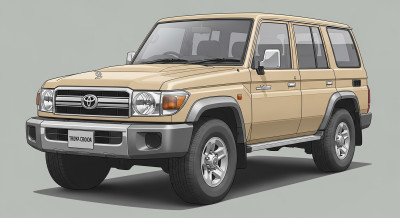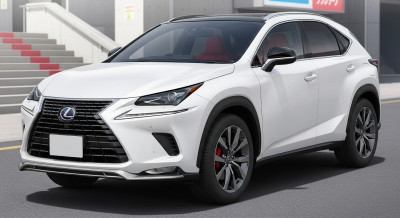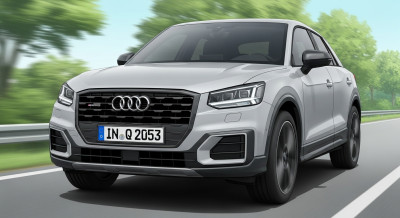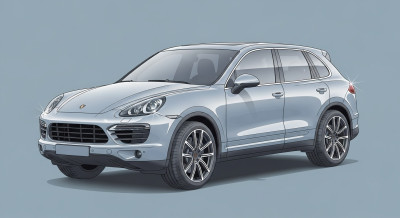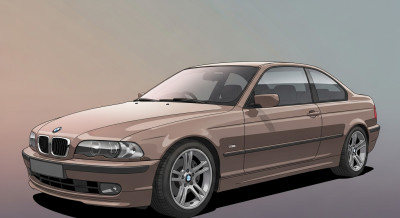Bentley Flying Spur - Luxury Grand Touring Sports Sedan
2020 Bentley Flying Spur - Interior and Exterior Design. Subscribe.
2020 Bentley Flying Spur Technical Specifications:
Engine Configuration: 6.0-litre twin-turbocharged W12 TSI
Capacity: 5950 cc / 363 cubic inches
Induction: 2x twin-scroll turbochargers, direct intercooling
Power: 635 PS / 626 bhp / 467 kW
Torque: 900 Nm / 664 lb.ft
Bore x stroke: 84 mm x 89.5 mm / 3.3” x 3.52”
Top speed: 207mph (333 kph)
0-60 mph: 3.7 s
0-100 kph: 3.8 s
The most advanced 12-cylinder engine in the world, the unique ‘W’ configuration means that the engine is considerably shorter than an equivalent V12, benefitting weight distribution and maximizing cabin space.
The Flying Spur’s new powertrain uses the very latest engine management technology, delivering noticeably enhanced performance when compared to the previous generation model. It produces 635 PS (626 bhp) and 900 Nm (664 lb.ft) of torque, accelerating the car to 0-60 mph in 3.7 seconds (100 km/h in 3.8 seconds), and on to a top speed of 207mph (333 km/h).
A more forward front axle position improves weight distribution in the new Flying Spur, enabling improved dynamic precision, handling and balance when coupled with active All-Wheel Drive, All-Wheel Steering and Bentley Dynamic Ride.
The new Flying Spur uses the same 8-speed ZF dual-clutch transmission as the Continental GT, for smooth and refined acceleration, quicker gearshifts and improved fuel economy. Faster gearshifts are achieved by pre-selecting the next gear, shortening the interruption of torque to the wheels and so improving performance. Maximum speed is reached in sixth gear, with the overdrive gears (seventh and eighth) used for economic grand touring.
The previous generation Flying Spur employed a permanent all-wheel-drive system with a fixed 60:40 power split to the rear/front axles. The all-new model has a clutched system which delivers two-wheel drive to the rear axle. Depending on the road conditions and wheel slip, it will then automatically send drive to the front axle as required, as an active all-wheel drive system. Turn-in response is also dramatically improved. The front end of the all-new Flying Spur feels much lighter and changes direction almost at the speed of thought. The understeer effect experienced with fixed all-wheel drive is virtually eliminated, making the car feel more balanced overall.
Torque distribution varies according to the selected Drive Dynamics Mode. In Comfort and Bentley modes, the system will send up to 480 Nm of torque to the front axle to offer greater grip and driveability. In Sport, the system limits the available torque to the front axle to 280 Nm, maintaining a higher torque level at the rear for a more dynamic feel. Torque is also managed across each axle by a torque-vectoring-by-brake system.
Electronic All-Wheel Steering is an all new technology feature, which enhances both stability at highway speeds and manoeuvrability around town. During low-speed manoeuvres, the system steers the rear wheels in the opposite direction to the front wheels. This has the effect of shortening the wheelbase, reducing the turning circle, increasing agility and making parking noticeably easier.
During high-speed manoeuvres, the system steers the rear wheels in the same direction as the front wheels, increasing stability and making overtaking and lane-changes more assured. Electronic All-Wheel Steering means no compromise between high speed confidence and low speed convenience.
The new, third generation Flying Spur uses three-chamber air springs which contain 60 percent more air volume compared to the previous model. This allows more scope to vary from sporting levels of spring stiffness to luxury limousine refinement depending upon which mode the driver has selected. The new car features CDC (Continuous Damping Control), which allows continuous regulation of the dampers.
Four ride height sensors constantly measure the distance between the axle and the body. If the system detects a difference compared with the normal height, the air volume in the springs is corrected accordingly to restore the normal height.
The Bentley Dynamic Ride System is designed to improve both handling and ride comfort. A 48-volt system controls an electronic actuator unit which manages the stiffness of the anti-roll bar, changing the stiffness on demand to combat cornering forces and keep the Flying Spur level.
The new Flying Spur shares the largest iron brakes in the world with the Continental GT, with 420 mm front discs. Both front and rear calipers carry Bentley branding. Standard fit is gloss black, with a gloss red finish optional.
The new Flying Spur also sounds as good as it looks, thanks to an adaptive tailpipe control valve with variable position settings. The way exhaust gases flow into the rear half of the system has been tuned to provide a more discreet exhaust note inside the cabin for chauffeur-driven occupants
2020 Bentley Flying Spur - Interior and Exterior Design. Subscribe.
2020 Bentley Flying Spur Technical Specifications:
Engine Configuration: 6.0-litre twin-turbocharged W12 TSI
Capacity: 5950 cc / 363 cubic inches
Induction: 2x twin-scroll turbochargers, direct intercooling
Power: 635 PS / 626 bhp / 467 kW
Torque: 900 Nm / 664 lb.ft
Bore x stroke: 84 mm x 89.5 mm / 3.3” x 3.52”
Top speed: 207mph (333 kph)
0-60 mph: 3.7 s
0-100 kph: 3.8 s
The most advanced 12-cylinder engine in the world, the unique ‘W’ configuration means that the engine is considerably shorter than an equivalent V12, benefitting weight distribution and maximizing cabin space.
The Flying Spur’s new powertrain uses the very latest engine management technology, delivering noticeably enhanced performance when compared to the previous generation model. It produces 635 PS (626 bhp) and 900 Nm (664 lb.ft) of torque, accelerating the car to 0-60 mph in 3.7 seconds (100 km/h in 3.8 seconds), and on to a top speed of 207mph (333 km/h).
A more forward front axle position improves weight distribution in the new Flying Spur, enabling improved dynamic precision, handling and balance when coupled with active All-Wheel Drive, All-Wheel Steering and Bentley Dynamic Ride.
The new Flying Spur uses the same 8-speed ZF dual-clutch transmission as the Continental GT, for smooth and refined acceleration, quicker gearshifts and improved fuel economy. Faster gearshifts are achieved by pre-selecting the next gear, shortening the interruption of torque to the wheels and so improving performance. Maximum speed is reached in sixth gear, with the overdrive gears (seventh and eighth) used for economic grand touring.
The previous generation Flying Spur employed a permanent all-wheel-drive system with a fixed 60:40 power split to the rear/front axles. The all-new model has a clutched system which delivers two-wheel drive to the rear axle. Depending on the road conditions and wheel slip, it will then automatically send drive to the front axle as required, as an active all-wheel drive system. Turn-in response is also dramatically improved. The front end of the all-new Flying Spur feels much lighter and changes direction almost at the speed of thought. The understeer effect experienced with fixed all-wheel drive is virtually eliminated, making the car feel more balanced overall.
Torque distribution varies according to the selected Drive Dynamics Mode. In Comfort and Bentley modes, the system will send up to 480 Nm of torque to the front axle to offer greater grip and driveability. In Sport, the system limits the available torque to the front axle to 280 Nm, maintaining a higher torque level at the rear for a more dynamic feel. Torque is also managed across each axle by a torque-vectoring-by-brake system.
Electronic All-Wheel Steering is an all new technology feature, which enhances both stability at highway speeds and manoeuvrability around town. During low-speed manoeuvres, the system steers the rear wheels in the opposite direction to the front wheels. This has the effect of shortening the wheelbase, reducing the turning circle, increasing agility and making parking noticeably easier.
During high-speed manoeuvres, the system steers the rear wheels in the same direction as the front wheels, increasing stability and making overtaking and lane-changes more assured. Electronic All-Wheel Steering means no compromise between high speed confidence and low speed convenience.
The new, third generation Flying Spur uses three-chamber air springs which contain 60 percent more air volume compared to the previous model. This allows more scope to vary from sporting levels of spring stiffness to luxury limousine refinement depending upon which mode the driver has selected. The new car features CDC (Continuous Damping Control), which allows continuous regulation of the dampers.
Four ride height sensors constantly measure the distance between the axle and the body. If the system detects a difference compared with the normal height, the air volume in the springs is corrected accordingly to restore the normal height.
The Bentley Dynamic Ride System is designed to improve both handling and ride comfort. A 48-volt system controls an electronic actuator unit which manages the stiffness of the anti-roll bar, changing the stiffness on demand to combat cornering forces and keep the Flying Spur level.
The new Flying Spur shares the largest iron brakes in the world with the Continental GT, with 420 mm front discs. Both front and rear calipers carry Bentley branding. Standard fit is gloss black, with a gloss red finish optional.
The new Flying Spur also sounds as good as it looks, thanks to an adaptive tailpipe control valve with variable position settings. The way exhaust gases flow into the rear half of the system has been tuned to provide a more discreet exhaust note inside the cabin for chauffeur-driven occupants.
 LEXUS
LEXUS  AUDI
AUDI  PORSCHE
PORSCHE  ROLLS-ROYCE
ROLLS-ROYCE  LAND ROVER
LAND ROVER  FERRARI
FERRARI  MASERATI
MASERATI  CADILLAC
CADILLAC  CHRYSLER JEEP
CHRYSLER JEEP 


















